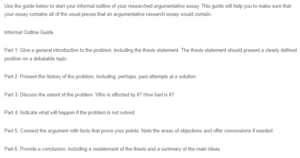Discussion – Federal Student Aid Programs
Part 1: Introduction to the problem
Student aid programs at the federal level are critical for learners seeking financial assistance. However, these programs are difficult to manage efficiently due to the lack of equity. Besides the inequitable distribution of financial resources, learners also have immense difficulty repaying the loans due to a lack of stable incomes. The default rate depicts a widespread challenge for learners who have benefitted from the financial student aid programs, which calls for a review of the current repayment plans to reduce the rate of default.
Part 2: History of the problem
In the past, more than forty million Americans have benefitted from student aid programs. The debt rounds off to approximately $1 trillion. After mortgages, student loans are ranked second as the most difficult to pay off. The lack of repayment is not caused by the debt crisis. Instead, the repayment crisis is caused by the lack of the ability and motivation to pay the debts (Dynarski, 2014).
Part 3: The extent of the problem.
The lack of repayment has led to a lack of sufficient financial resources to fund other learners’ education. The lack of increased funding at the state level raises concerns as well as the distribution criterion (Taliaferro & Duke-Benfield, 2016).
Part 4: What will happen if the problem is not solved?
Eventually, failure to find a solution to the repayment crisis may lead to a total lack of programs. As the country’s economy experiences difficulties, the lack of equity in the distribution of financial resources among learners is expected to exacerbate (The Spencer Foundation, 2008).
Part 5: Facts proving the argument
The current repayment crisis is clearly affecting the availability of funds and access by other students. Failure to service student loans is caused by a lack of motivation and ability to pay.
Part 6: Conclusion
The default rate depicts a widespread challenge for learners who have benefitted from the financial student aid programs, which calls for a review of the current repayment plans to reduce the rate of default. The current situation also calls for a review of the distribution and repayment plans to increase the program’s efficiency.
References
Dynarski, S. (2014). An Economist’s Perspective on Student Loans in the United States. Brookings Institution. Retrieved from https://www.brookings.edu/research/an-economists-perspective-on-student-loans-in-the-united-states/
Taliaferro, W., & Duke-Benfield, A. E. (2016). Redesigning State Financial aid to Better Serve Nontraditional Adult students. Center for Law and Social Policy. Retrieved from https://www.clasp.org/publications/report/brief/redesigning-state-financial-aid-better-serve-nontraditional-adult-students
The Spencer Foundation. (2008). Fulfilling the Commitment: Recommendations for Reforming Federal Student Aid. University of Michigan. Retrieved from https://fordschool.umich.edu/news/2009/fulfilling-commitment-recommendations-reforming-federal-student-aid
ORDER A PLAGIARISM-FREE PAPER HERE
We’ll write everything from scratch
Question

Discussion – Federal Student Aid Programs
Use the guide below to start your informal outline of your researched argumentative essay. This guide will help you to make sure that your essay contains all of the usual pieces that an argumentative research essay would contain.
Informal Outline Guide
Part 1: Give a general introduction to the problem, including the thesis statement. The thesis statement should present a clearly defined position on a debatable topic.
Part 2: Present the history of the problem, including, perhaps, past attempts at a solution.
Part 3: Discuss the extent of the problem. Who is affected by it? How bad is it?
Part 4: Indicate what will happen if the problem is not solved.
Part 5: Connect the argument with facts that prove your points. Note the areas of objections and offer concessions if needed.
Part 6: Provide a conclusion, including a restatement of the thesis and a summary of the main ideas.

